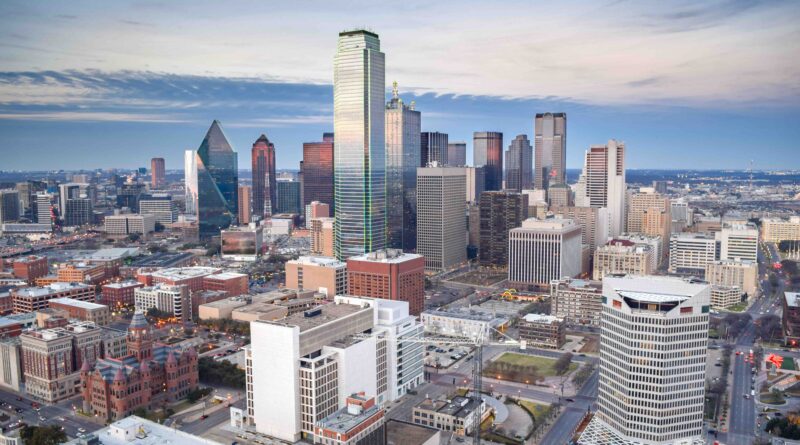The AI Interview: Ali Hatefi, Director, Public Works, Dallas, Texas
Industry leader discusses 2024, technology development and infrastructure challenges for the new year
 American Infrastructure: How has this past year affected our infrastructure? How does it influence our nation’s future?
American Infrastructure: How has this past year affected our infrastructure? How does it influence our nation’s future?
Ali Hatefi: I believe 2023 continued to be a good year for infrastructure as more funding became available through Bipartisan Infrastructure Law (BIL). This has led to increased investment in roads, bridges, railways and more. 2023 witnessed a surge in technological advancement within public agencies, with municipalities embracing new tools to enhance both efficiency and productivity, fostering an innovative landscape for infrastructure management.
AI: Reflecting on 2023, what has the climate crisis brought to mind in terms of public works?
AH: The year witnessed extreme weather events such as heatwaves in Texas, highlighting the vulnerability of existing infrastructure. This has spurred a sense of urgency to build resilience into future projects.
AI: What do you think 2024 has in store for public works?
AH: For the City of Dallas, 2024 is an exciting year as the city is proposing a plan for our 2024 Bond Program to invest more than $1 billion on nine propositions to include street and transportation, flood protection, public safety facilities, parks, housing, economic development, library facilities, city facilities and art and cultural facilities. Once the bond program is approved, we will see continued investment in climate-resilient infrastructure projects. I believe we will also see more public works agencies adopting new technologies to manage their infrastructure.
Employing a holistic approach that addresses technological, financial, regulatory and societal aspects to successfully improve infrastructure and incorporate new technologies is vital to combat such challenges.”
AI: Can you speak to technology and its relation to the development of infrastructure?
AH: Technology has evolved exponentially in the past five to 10 years, and it has always played an important role in the development of infrastructure throughout history. As technology continues to advance, it is creating new opportunities to improve the planning, design, construction and operation of infrastructure projects.
While certain tools, like Geographic Information Systems (GIS) and Building Information Modeling (BIM), are currently employed by certain public agencies, the subsequent emerging technologies, among others, hold the potential to shape the future of operation and development. Here are a few examples: digital twin; drone inspection; smart sensors and internet of things (IoT); 3D printing; and artificial intelligence (AI).
AI: What are some projects, initiatives, etc. that the Dallas Department of Public Works will be tackling in 2024?
AH: The City of Dallas’ Public Works Department has always tried to initiate innovative projects and approaches to do business and provide better services to the public. As part of the 2024 Bond Program, the department is exploring the integration of greener infrastructure in capital improvement projects (CIP) by incorporating iSWM (integrated stormwater management) and Envision in roadway design. We have also explored “cool pavement” in our maintenance projects and are monitoring its performance to evaluate the feasibility of this treatment for the future to mitigate urban heat island effects and improve air quality.
Public Works is also finalizing a drone safety policy to utilize drone inspection for bridge and roadway inspections. AI is another tool that we are exploring to use in our pavement data collection process.
The Dallas Department of Public Works is spearheading the development of a novel pavement incorporating fiber reinforcement, in collaboration with a local university. This innovative material promises to significantly reduce construction time while potentially enhancing pavement lifespan.
We continue to consistently explore creative solutions to overcome the challenges we face.
AI: Is there anything else you would like to add?
AH: Public agencies face several key challenges when it comes to improving infrastructure and adopting new technologies. Some common obstacles include:
Budget Constraints: Limited financial resources often hinder the ability to invest in new technologies and infrastructure improvements.
Regulatory Hurdles: Adhering to existing regulations and navigating complex approval processes can slow down the adoption of innovative technologies and infrastructure projects.
Legacy Systems and Infrastructure: Outdated and incompatible legacy systems may pose integration challenges when implementing new technologies or upgrading existing infrastructure.
Workforce Skill Gaps: The need for specialized skills to operate and maintain advanced technologies may be a barrier, requiring ongoing training and recruitment efforts.
Data Privacy and Cybersecurity Concerns: The integration of new technologies introduces cybersecurity risks and ensuring robust security measures can be a complex and ongoing challenge.
Environmental and Sustainability Considerations: Balancing the need for development with environmental sustainability goals can be challenging, requiring careful planning and adherence to environmental standards.
Public agencies need to navigate these challenges strategically, employing a holistic approach that addresses technological, financial, regulatory and societal aspects to successfully improve infrastructure and incorporate new technologies is vital to combat such challenges.

